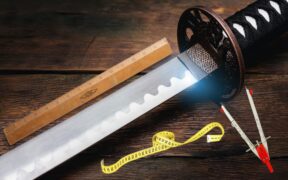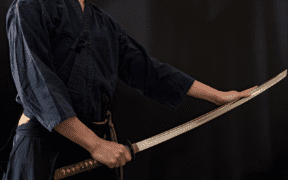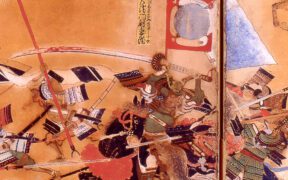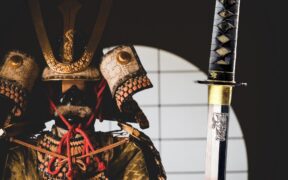How to Accurately Measure Japanese Sword Lengths
NO AI USED This Article has been written and edited by our team with no help of the AI
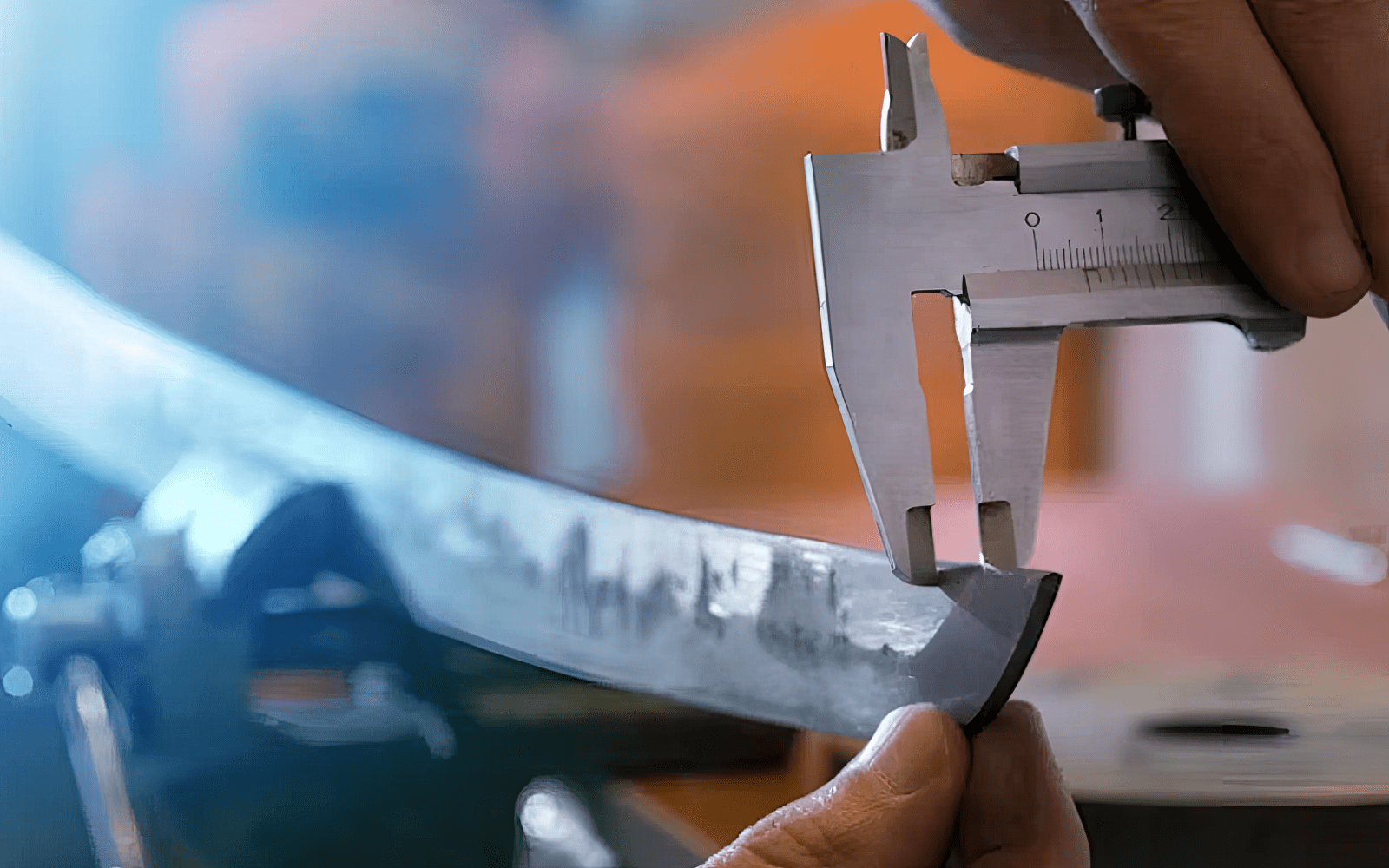
Japanese swords vary in length and are classified into three primary groups and several subgroups. Every part of a sword, from the tip to the core, has a unique Japanese name. This is also true of a sword’s dimensions, including its thickness, curvature, and length.
If you’re looking to acquire a Japanese sword and find yourself overwhelmed by the various sizings, or you’re curious about the dimensions of a sword you already own, you’ve come to the right place.
In this article we delve into the major Japanese sword-length groups and explain how they work. Then we discuss the parts of a sword and teach you how to measure these for yourself.
Japanese Sword Measurement System
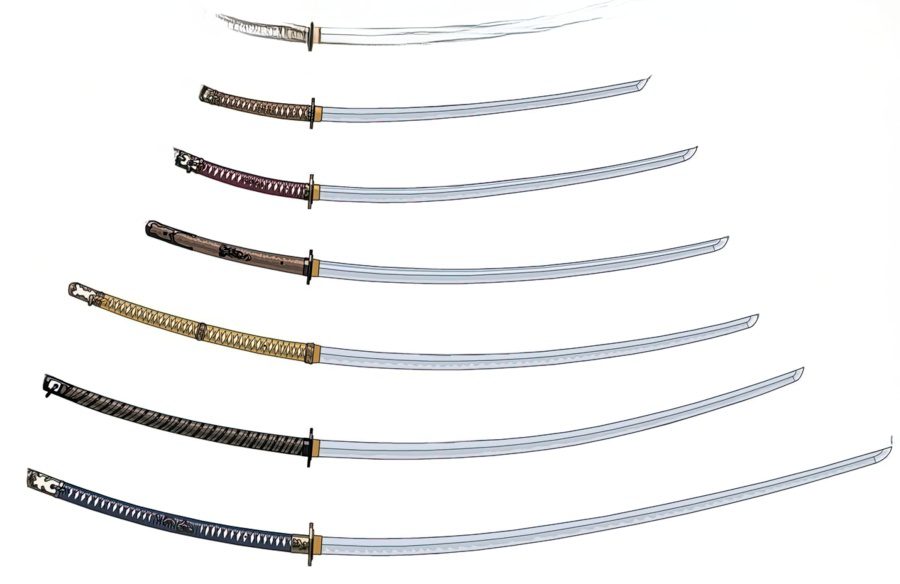
Japanese swords come in many lengths and sizes. They are measured using a traditional Japanese measurement system made up of the following units:
- Shaku: 11.93 inches (30.30 cm)
- Sun: 1.193 inches (3.03 cm)
- Bu: 0.119 inches (0.303 cm)
- Rin: 0.01193 inches (0.0303 cm)
The modern shaku is a similar length to its historical counterpart. It is generally taken to be 12 inches (30.48 cm). The amount of shaku a sword has determines its sword-length group.
Japanese Sword-Length Groups
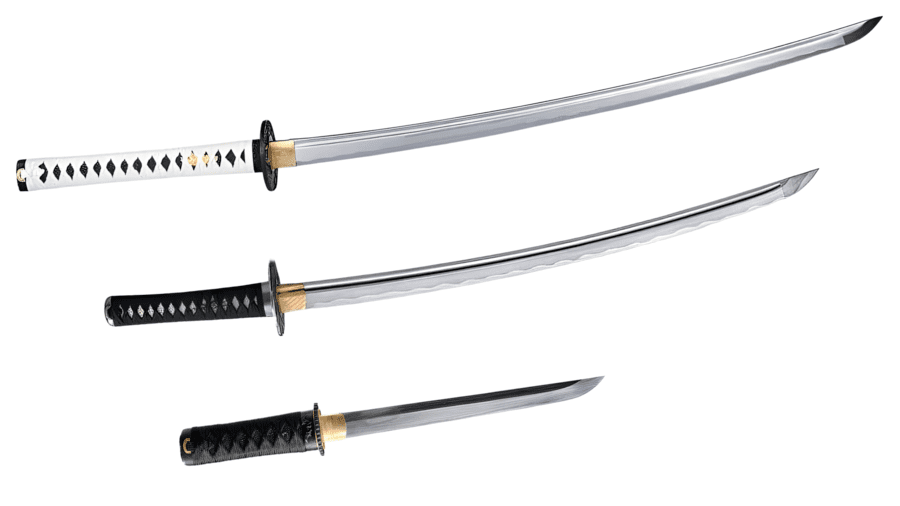
There are three Japanese sword-length groups. These are:
- Daito (Long Swords) – more than two shaku (24 inches / 60.6 cm)
- Shoto (Short Swords) – between one and two shaku (12 inches / 30.3 cm)
- Tanto (Daggers or Knives) – less than one shaku (12 inches / 30.3 cm)
Some of the most popular two-handed samurai swords, like the katana, tachi, and nodachi, fall into the daito category. Those weapons that belong to the shoto category, like the wakizashi, can be one or two-handed, while weapons in the tanto category are almost always one-handed.
Measuring Your Japanese Sword
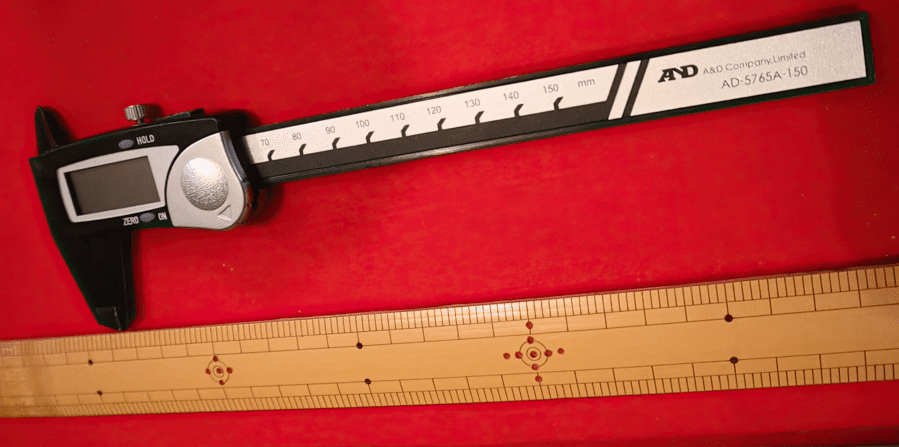
The length of a Japanese sword is determined by measuring the blade and the handle. The tools you’ll need are calipers, a ruler, a cloth on which to put the blade, and a soft cushion to stabilize it.
Blade
The blade is the most important part of a Japanese sword. It is made of steel and includes a tang, which inserts into the handle and is not visible.
When measuring the blade, we measure the visible part only.
Entire Length – Nagasa

The blade length of a Japanese sword is called nagasa. The blade begins at the mune-machi and ha-machi, which are notched and separate the blade from the tang.
The length of the blade is measured in a straight line, without attempting to follow the blade’s curvature. It is best to measure a sword without any fittings and mountings attached, but it can also be measured from the handguard to the tip.
Tip Length – Kissaki

The tip of a Japanese sword is known as kissaki, which can also be measured. The part separating the kissaki and the blade is called a yokote, a distinctive feature near the tip.
“There is no guarantee that the yokote is exactly in its right position on a katana sword,” says Paul Martin, a Japanese sword specialist living in Tokyo.
Some blades lack a yokote or have an incorrectly positioned decorative yokote. In this case, the tip length is measured from the point where the blade starts tapering to its tip.
Curvature – Sori

The curvature of a Japanese sword is known as sori. The best way to measure it is by using calipers or by balancing the blade on a point.
If using calipers, insert them at the deepest part of the curvature, around the middle of the blade. Now measure the distance from the blade to the ruler.
Width – Mihaba

The width of the blade is called mihaba. This is the distance from the top of the unsharpened spine to the cutting edge on the opposite side. The width near the tang is called moto-haba, and the part near the tip is called saki-haba.
The best way to measure these is to place the blade between the calipers. Another method is to lay the blade edge-down and measure the length from the lowest point to the highest.
Thickness – Kasane
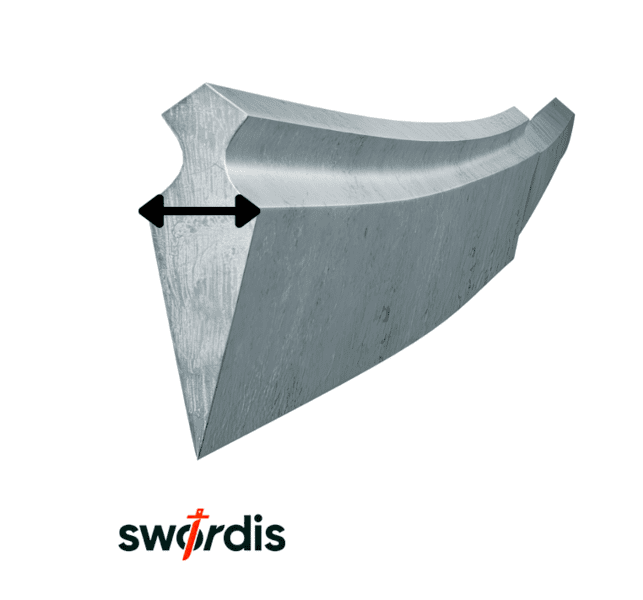
The thickness of the blade is known as kasane. This is the distance from one side of the blade’s core to the other. The thickness at the base of the blade is called motokasane and the thickness at the tip is called sakikasane.
Again, it’s best to use calipers when measuring thickness. Another method is to place a tape measure directly on top of the blade while it is edge-down.
Handle and Tang
The handle of a sword is the part that can be gripped and is known as tsuka. It is truly iconic and used on most types of swords originating in Japan. The high-quality fittings on the handle are known as koshirae.
Tang – Nakago

The tang of the katana is known as nakago. It fits inside the handle and is only visible when the sword is disassembled.
It is measured from the endpoint to the parts called munemachi and hamachi. They are easily noticeable as they broaden.
Tsuka Length
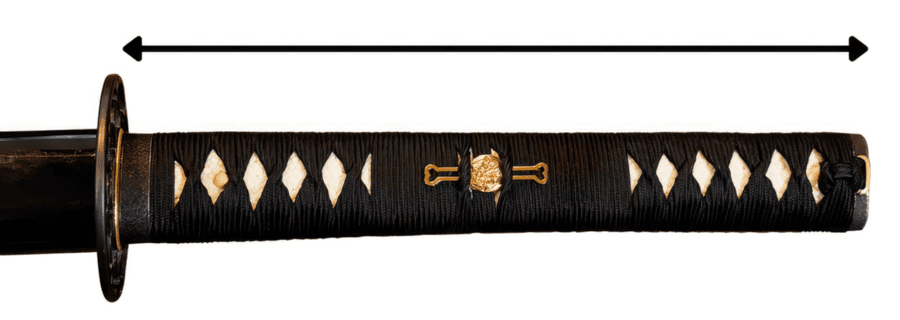
The tsuka is the part that is gripped and it is wrapped with wood and a cord known as tsuka-ito.
The tsuka is measured from the bottom of the kashira (pommel cap) to the tsuba (handguard). The blade collar, known as habaki, is not included in this measurement.
Tsuka Width
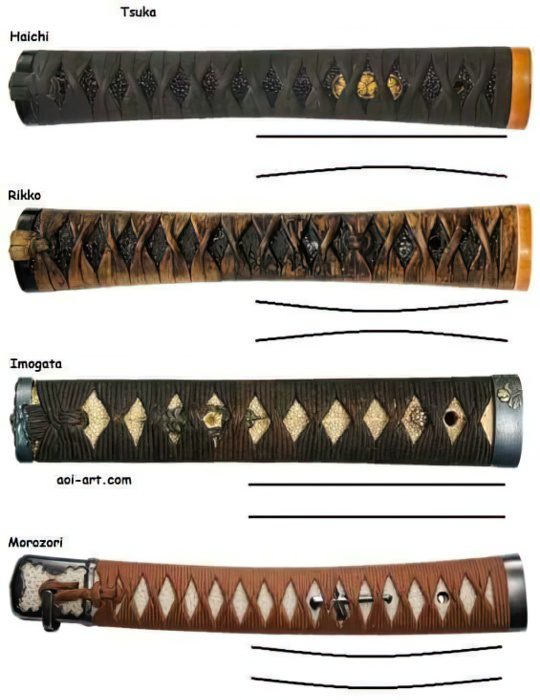
On rare occasions, the handle width of a Japanese sword might be measured. If the width is consistent, it is known as an imogata size or shape.
If only one side is slightly curved inward, it is called a haichi size. If, however, the handle has an hourglass shape, it is referred to as rikko. This tsuka width is the narrowest.
